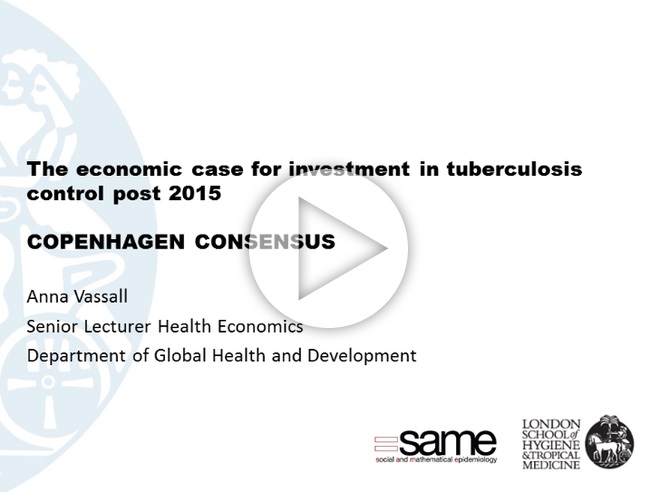India Perspective: Tuberculosis
Over 2 million Indians developed tuberculosis (TB) in 2013, and around 278,000 people in the country die from the disease every year: about 30 an hour. TB not only affects health, but the loss of earnings and cost of treatment forces many people deeper into poverty. The main focus of this study for the Copenhagen Consensus is the reduction of deaths from TB.
Many people have a latent TB infection. Of these, about 5% develop active TB within 18 months, while a further 5% will develop it sometime later in life. Most cases respond well to a standard combination of drugs, but some are multi-drug resistant (MDR-TB) largely because of poor initial treatment. About 2.2% of new cases in India are multi-drug resistant, with many more emerging if more than one course of treatment is needed.
Early detection of TB is important to reduce transmission, but finding those with the active disease is difficult because many of the symptoms are similar to those for other common diseases. As in most countries, India relies mainly on people presenting themselves to health services when they are ill. However, a particular problem in the country is that nearly half of TB sufferers first visit private practitioners who are not able to diagnose and treat the disease properly.
Multiple visits may be needed and there is an average delay of two months in receiving proper treatment. One result is that only 58% of all cases are notified to the Revised National Tuberculosis Control Programme (RNTCP). Engaging public and private health provision ensures that private practitioners become more effective, and expanded engagement is a critical part of a strategy to reduce deaths and further transmission.
TB is most commonly diagnosed using smear microscopy of sputum samples, although a particular issue in India is that some private practitioners use ineffective diagnostic techniques that are more expensive and produce many false positives. However, even microscopy may miss many active cases, particularly for those also infected with HIV, and the more expensive Xpert MTB/RIF test is now recommended by the World Health Organisation. This test also identifies those at most risk from MDR-TB.
About 6% of TB sufferers in India are also HIV infected, but this group accounts for 13% of all deaths. Routine referral of those diagnosed with TB to HIV diagnosis and treatment services is recommended by the Indian government for the nine states where HIV infection is most common.
Most cases of TB are treated with a standard combination of drugs in two phases over six months, and generally this can be carried out effectively in the community. Over 90% of TB cases can be cured with proper monitoring and high adherence to taking the full course of medicine; in India the success rate is about 88%. Treatment of MDR-TB is much more complex and expensive, may take two years and may require hospitalisation. Only about half the sufferers starting treatment are cured.
TB is a particular problem for poor families. Over three quarters of TB patients are from households with an income of less than a dollar a day per person, but it costs about $145 for treatment (nearly half a year’s income for one person). The average sufferer (across all social groups) also loses about $500 in income.
However, treating TB can be highly cost-effective. Between 1997 and 2006, scaling up of TB control saved 1.3 million lives and a total of over 29 million life-years of disability or death. The overall increase in economic well-being was valued at $88 billion for the ten year period, and each dollar spent generated $115 worth of benefits.
Although the World Health Assembly has proposed a post-2015 target of reducing deaths from TB by 90%, widespread general population screening would be needed to achieve this, and the cost of this is unknown. However, a substantial reduction of up to 70% is feasible, saving about 180,000 deaths a year by 2025.
It currently costs about $215 (13,500 rupees) to treat a TB patient in India, including general health service costs. This increases to $7,500 (half a million rupees) for a case of MDR-TB. More public-private engagement would be cost-neutral, but a further $9-15 would be needed for each month of treatment for social support and to ensure the full course of medicine is taken. Extra money is also needed for improved diagnostic testing. Overall, to reduce deaths by 70% by 2025, there would be an additional cost of $180 million (five billion rupees) a year on top of current spending of $250 million.
Depending on the assumptions made about the valuation of life and the discount rate, each rupee spent would give benefits of between 11.9 and 71.9 rupees, making a very strong case for improved TB control in India.


